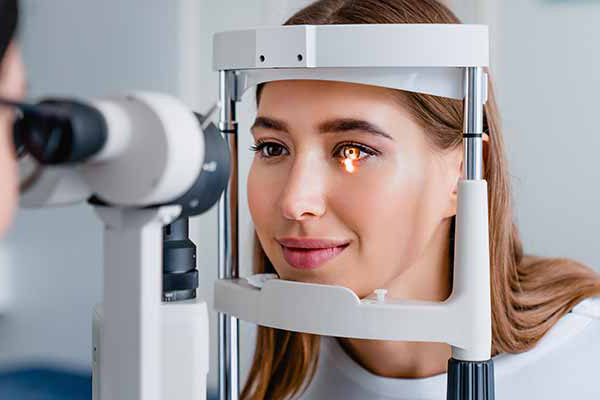Specialist Ophthalmologist in Andalusia: Your Vision Is Entitled To the most effective
The Advantages And Disadvantages of Various Refractive Surgeries for Boosted Eyecare

LASIK Surgical Procedure
LASIK surgery is a frequently executed refractive treatment that intends to correct vision concerns such as nearsightedness, astigmatism, and farsightedness. This medical strategy has actually gained popularity because of its efficiency in offering people with clearer vision and decreasing their reliance on glasses or get in touch with lenses. During the procedure, a slim flap is developed on the cornea, and a laser is used to improve the underlying cells, dealing with the refractive error. The flap is after that repositioned, enabling for fast healing and minimal pain for the client.
One of the key benefits of LASIK surgical treatment is the quick enhancement in vision experienced by several patients. A lot of individuals notice a significant improvement in their vision soon after the procedure, with marginal downtime required for recovery. In addition, LASIK is understood for its high success rate and reduced occurrence of complications when performed by experienced surgeons. Like any medical procedure, LASIK also lugs some dangers, including completely dry eyes, glare, halos, and under or overcorrection of vision. It is important for people thinking about LASIK surgery to undertake an extensive evaluation by an eye treatment professional to figure out if they are suitable candidates for the treatment.
PRK Treatment
The PRK treatment, likewise recognized as Photorefractive Keratectomy, is a kind of refractive surgical procedure that aims to remedy vision concerns similar to LASIK surgical treatment. Unlike LASIK, which entails creating a flap in the cornea, PRK deals with the surface area layer of the cornea. Throughout the PRK treatment, the outer layer of the cornea, called the epithelium, is removed to allow reshaping of the underlying corneal tissue with an excimer laser. This improving helps to remedy refractive errors such as nearsightedness, astigmatism, and farsightedness.
One of the advantages of PRK over LASIK is that it removes the danger of flap-related difficulties since no flap is produced during the surgery. Despite the longer recovery period, PRK can be a suitable option for individuals looking for vision correction surgical procedure.
SMILE Surgical Procedure
A cutting-edge refractive surgery method gaining popularity in the area of ophthalmology is SMILE Surgical procedure. Tiny Cut Lenticule Extraction (SMILE) is a minimally invasive procedure that corrects vision by improving the cornea making use of a femtosecond laser. Unlike standard LASIK surgical treatment, SMILE Surgical treatment entails producing a tiny cut in the cornea to extract a lenticule, which results in much less interruption to the corneal structure and possibly quicker recovery times.
Among the primary benefits of SMILE Surgery is its capability to treat nearsightedness (nearsightedness) and astigmatism with high accuracy, bring about superb visual end results for clients. The minimally intrusive nature of the procedure likewise reduces the danger of difficulties such as dry eye syndrome, making it a positive alternative for individuals looking for refractive surgical procedure.

LASEK Technique
Having actually checked out the advantages and factors to consider of SMILE Surgery, an additional notable refractive surgical procedure method worth examining is the LASEK Strategy. LASEK, which stands for Laser-Assisted Subepithelial Keratectomy, is a kind of laser eye surgical treatment that intends to remedy refractive errors such as myopia (nearsightedness), hyperopia (farsightedness), and astigmatism.
Unlike LASIK, LASEK does not include developing a corneal flap. Instead, throughout a LASEK procedure, the surgeon utilizes a diluted alcohol remedy to loosen the slim outer layer of the cornea, referred to as the epithelium. This layer is then delicately moved apart to allow the laser to reshape the underlying corneal tissue. Once the cornea has been reshaped to the preferred level, the epithelial layer is repositioned.
One of the main advantages of LASEK is that it can be ideal for individuals with thin corneas that may not be good prospects for LASIK. look here In addition, LASEK generally causes minimal post-operative pain and a quicker recuperation time compared to PRK. Nonetheless, the aesthetic recovery process with LASEK may be somewhat longer than with LASIK.
Implantable Contact Lenses
Implantable Get in touch with Lenses use a lasting vision correction service for people looking for a choice to typical contact lenses or glasses. These lenses, also referred to as phakic intraocular lenses, are surgically placed right into the eye to remedy refractive mistakes such as nearsightedness (nearsightedness), hyperopia (farsightedness), and astigmatism. neurologist Andalusia. Unlike traditional contact lenses that remain on the surface of the eye, implantable call lenses function within the eye itself, giving clear vision without the requirement blog here for day-to-day upkeep or removal
One of the essential advantages of implantable get in touch with lenses is their durability. As soon as placed, they can stay in the eye indefinitely, providing regular and secure vision adjustment. Furthermore, these lenses can be an exceptional choice for individuals who are bad prospects for laser eye surgical procedure or who choose a reversible vision correction treatment.
Nonetheless, implantable get in touch with lenses do carry some threats, consisting of the capacity for cataracts or enhanced eye stress. It is critical for people considering this choice to consult with an eye care specialist to establish if implantable get in touch with lenses are the best choice for their details demands and eye wellness.
Final Thought
In conclusion, each kind of refractive surgical procedure has its own advantages and negative aspects. LASIK surgery is preferred for its fast healing time, while PRK treatment may be ideal for individuals with thin corneas. SMILE surgical procedure provides minimal pain during the treatment, but LASEK strategy may have a longer recovery process. Implantable call lenses offer an alternative for those that are not suitable prospects for traditional surgical procedures. Clients should speak with their eye treatment supplier to determine the very best option for their specific needs.

On The Whole, SMILE Surgical treatment offers a promising alternative for individuals looking to improve their vision with refractive surgical treatment.